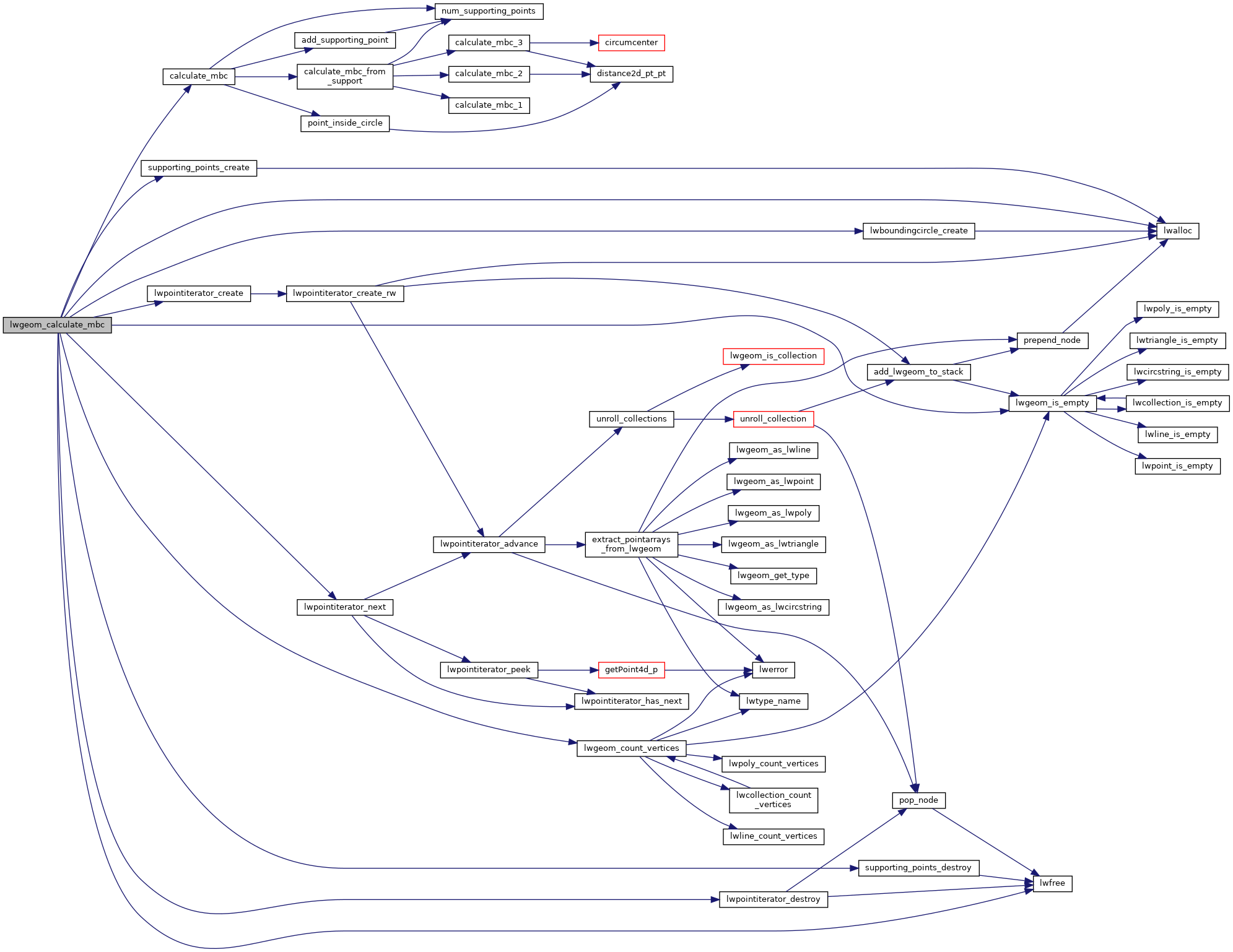◆ lwgeom_calculate_mbc()
| LWBOUNDINGCIRCLE* lwgeom_calculate_mbc | ( | const LWGEOM * | g | ) |
Definition at line 237 of file lwboundingcircle.c.
LWPOINTITERATOR * lwpointiterator_create(const LWGEOM *g)
Create a new LWPOINTITERATOR over supplied LWGEOM*.
Definition: lwiterator.c:242
int lwpointiterator_next(LWPOINTITERATOR *s, POINT4D *p)
Attempts to assign the next point in the iterator to p, and advances the iterator to the next point.
Definition: lwiterator.c:210
void lwpointiterator_destroy(LWPOINTITERATOR *s)
Free all memory associated with the iterator.
Definition: lwiterator.c:267
uint32_t lwgeom_count_vertices(const LWGEOM *geom)
Count the total number of vertices in any LWGEOM.
Definition: lwgeom.c:1229
static void supporting_points_destroy(SUPPORTING_POINTS *s)
Definition: lwboundingcircle.c:47
static int calculate_mbc(const POINT2D **points, uint32_t max_n, SUPPORTING_POINTS *support, LWBOUNDINGCIRCLE *mbc)
Definition: lwboundingcircle.c:174
static SUPPORTING_POINTS * supporting_points_create()
Definition: lwboundingcircle.c:36
static LWBOUNDINGCIRCLE * lwboundingcircle_create()
Definition: lwboundingcircle.c:217
static int lwgeom_is_empty(const LWGEOM *geom)
Return true or false depending on whether a geometry is an "empty" geometry (no vertices members)
Definition: lwinline.h:193
Definition: liblwgeom.h:1755
Definition: lwiterator.c:45
Definition: liblwgeom.h:375
Definition: liblwgeom.h:399
Definition: lwboundingcircle.c:29
References calculate_mbc(), LW_FAILURE, lwalloc(), lwboundingcircle_create(), lwfree(), lwgeom_count_vertices(), lwgeom_is_empty(), lwpointiterator_create(), lwpointiterator_destroy(), lwpointiterator_next(), supporting_points_create(), supporting_points_destroy(), POINT2D::x, POINT4D::x, POINT2D::y, and POINT4D::y.
Referenced by mbc_test(), ST_MinimumBoundingCircle(), ST_MinimumBoundingRadius(), and test_empty().
Here is the call graph for this function:

Here is the caller graph for this function:
